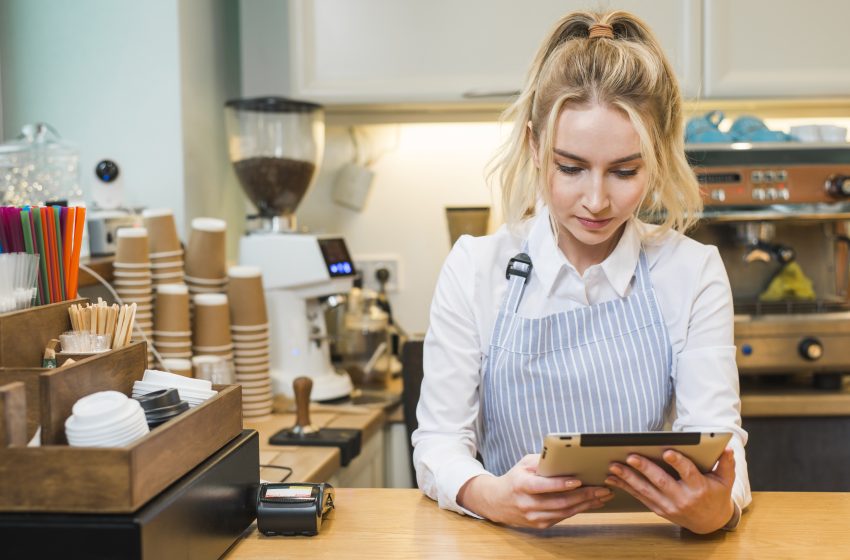10 Tips to Go Digital in the Coffee Sector

Digital marketing should be an integral component of every side practice coffee shop’s strategy. It
helps build customer trust and credibility, leading to more sales. SMEs can take advantage of digital
tools to increase sales opportunities, monitor their business activities digitally, and build resilience
against potential crises. However, there are certain key considerations when using digital marketing
for coffee shops.
1. Make Your Website Mobile-Friendly
Your website is your digital coffee storefront. Ensure it’s user-friendly, mobile-responsive, and easy to navigate. Include essential information like your menu, location, and contact details.
Avoid distracting pop-ups shouting “NEED MORE COFFEE?” on mobile devices to prevent visitors
from leaving your site and turning off search engines, and instead providing content that attracts and
engages them to increase visitor retention – this will help your site rank higher on search engine
results pages.
2. Create a Blog
Customers enjoy relaxing at coffee shops, talking with baristas, and learning more about how they
collect coffee, brew it, etc. An online blog extends this relationship. Create informative articles such
as trend updates, eco-friendly coffee packaging, or how-to guides on creating the ideal cup of joe.
This will show your audience that you’re dedicated and knowledgeable in this industry.
Blog posts that are entertaining, useful, and shareable tend to bring in more visitors to your website
since people tend to discuss something they found fascinating with friends rather than something
boring and product-focused.
3. Create a Social Media Presence
Social media provides coffee shops with an avenue to communicate directly with their customers
and offer promotions or specials. Furthermore, curated content such as pictures, video testimonials,
or stories can help showcase the business and drive business forward.
Coffee shops that take their business digital can reach an even wider audience by creating social
media accounts and engaging their customers through two-way dialogue online. Customers can ask
about special promotions or upcoming events quickly and receive answers promptly from staff
members.
An understanding of your audience’s likes and dislikes helps you create content that resonates with them. For example, looking at Monmouth Coffee’s Topic Cloud and Mentions list shows that many praise their coffee beans.
Utilize this data to advertise your coffee shop’s products in ways that resonate with its target
market. For instance, running ads in local newspapers related to events or holidays that may draw
people in may increase foot traffic to your side practice coffee shop. In addition, social media posts
and websites can promote these items.
4. Hire a Digital Marketing Agency
Digital marketing can be an intricate subject requiring both knowledge and experience. If you need
assistance getting started with coffee marketing, consider hiring a digital marketing agency to assist
with it. Do your research when choosing one – be sure to look for industry experience as well as
reliable communication styles and project management processes before making your selection.
European coffee buyers are demanding that small and medium-sized enterprises (SMEs) employ
digital tools to monitor and ensure that their products adhere to sustainability, traceability, and
transparency requirements. Companies leveraging digital tools for internal control, inventory
systems and quality evaluation report significant benefits in terms of sales opportunities as well as
resilience against potential crises!
5. Collect Email Addresses
Establishing your own email list is vital to a successful online coffee business. As more subscribers
sign up, targeted marketing campaigns become possible.
Coffee SMEs must recognize opportunities for customer email address collection by using prominent
forms on their websites, blog posts, and even business cards. Note that an email signup form should
provide value and alleviate their immediate pain point, even if that means simply offering them a
short guide or checklist to solve their issue.
As part of your email list-building coffee marketing strategy, automating emails and giving customers
the power to change the frequency and content of updates and offers is an ideal way to stay in
contact without overwhelming customers.
6. Offer Free WiFi
Offering free WiFi is an effective way to attract and retain customers, with many preferring
restaurants or cafes that provide this service over those without it. Furthermore, offering it can help
businesses track customers and understand their needs and wants. For instance, Dahlke’s Ashlawn
Farm Coffee location near a train station is popular with customers looking for a reliable Internet
connection that won’t distract them while working. Furthermore, certain WiFi services enable
owners to offer payment portals so patrons don’t have to wait on servers if they need more coffee.
7. Host Events and Cafe Promotions
Social media is an effective way of building brand recognition, particularly among millennials and
increasing engagement within your coffee business’s community. Hosting events or cafe promotions
on social media allows for brand building that resonates with this demographic.
Interactive content is also an effective way to attract followers and maintain customer engagement,
including quizzes, assessments, and surveys that offer unique ways of connecting with customers.
Digitalization offers many opportunities for small and medium-sized coffee businesses (SMEs) to
increase profitability, but finding an optimal digital solution depends on knowing yourself, your
capacity, and your needs.
8. Send Emails About Special Offers
Email marketing is an ideal way to maintain strong relationships with your customers. By sending
emails about special offers or events coming up, email marketing allows your business to stay in
contact. Also, make sure your customers can control how often they get these messages!
Coffee SMEs can utilize digital tools to better manage their sales and procurement processes,
helping to enhance profitability by tracking orders; and progress. La Finca, Origin Coffee Lab, and Muraho
Trading are three examples of companies that collect coffee and have taken advantage of such
digital tools to enhance profitability.
Social media is also an ideal place to advertise your online store, drawing new customers in. Post
beautiful coffee bean pictures and creative brewing methods to pique people’s curiosity about your store. Incentivize loyal customers by offering appealing perks such as free shipping. This will increase customer acquisition.
9. Offer Discounts on Online Orders
One effective strategy for drawing more customers online is offering discounts. Discounts encourage
repeat purchases during slower periods – for instance, you might give discounts when customers buy
specific amounts of coffee or sign up for your loyalty program.
A digital loyalty program can keep customers coming back. Offer rewards for frequent visits or
purchases and use a mobile app to track points and redemptions.
10. Keep Up With the Latest Trends
Keep up-to-date with current trends to improve your coffee marketing strategy and increase guest
retention. AI technology can assist in recognizing guests who have left and sending targeted
messages to try to bring them back in.
Enable contactless payment methods, such as mobile wallets and card tapping, to provide a safe and
convenient checkout experience for your customers. Other trends include using coffee in ice cream
and popsicles, as well as cocktails featuring cold brew. All these developments demonstrate how
side practice coffee has become more of a treat than ever before.
Conclusion:
Many coffee buyers have adopted digital tools to optimize the quality of their supply chains and
provide financial services to farmers. Aldea Global uses a digital platform to store contracts and
monitor deliveries from members, while Neumann Kaffee Gruppes NKG Bloom offers loans directly to individual producers.
Digitalization also assists farmers with mitigating climate risks by improving weather forecasts,
decreasing pests and diseases, tracking carbon emissions, and tracking carbon footprints. However,
implementation of such systems often requires significant time and financial investments.
Going digital in the coffee sector is not just a trend; it’s a necessity. These ten tips can help your
digital coffee business thrive in a digital world. As technology continues to shape the industry,
embracing digital strategies will ensure your coffee business remains relevant and successful. So,
brew your best cup and take your coffee business to new heights in the digital age.



